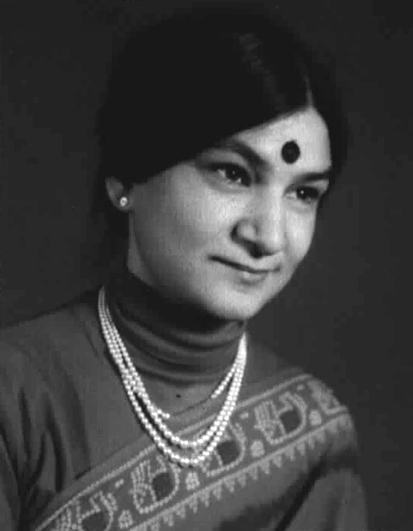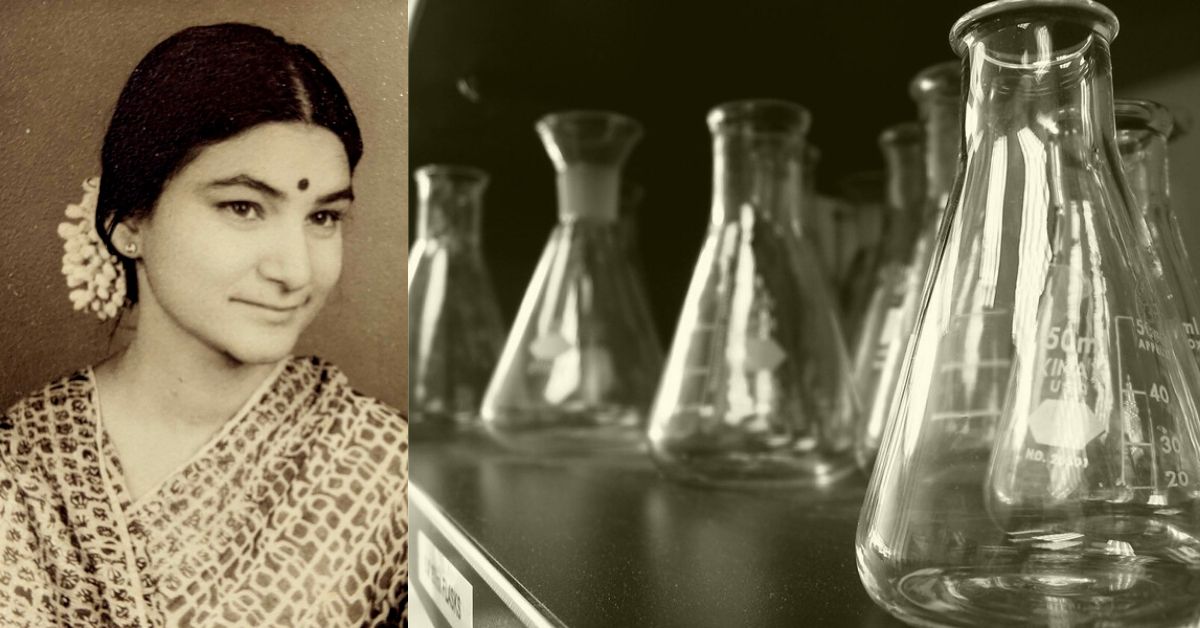Off the top of your head, how many women in science can you name from across the globe? Go ahead, take your time. Now that you have done that, how many Indian women in science can you think of? Does the name Darshan Ranganathan crop up in your head?
A pioneer in the field of chemistry, among the many awards she had won for her work, Darshan was the recipient of Third World Academy of Sciences Award for her outstanding contributions to bio-organic chemistry.
In a world where the representation of women in the fields of Science, Technology, Engineering, and Math (STEM) is quite low, the legacy left behind by women like Darshan can be a guiding force for many girls who want to make a mark in the field of science.

Darshan Ranganathan not only made strides in the field of bio-organic chemistry research, but funded her entire career with multiple fellowships. One of these fellowships even gave her the opportunity to travel all the way to Imperial College in London for a post-doctoral in the late 1960s!
Darshan Ranganathan – Her Early Life
Darshan was born in Karol Bagh, New Delhi on 4 June, 1941 and was the third child to Shantiswarup Makan and Vidyavati Markan. She completed her early education from Aryaamamj Girl’s Primary School in Delhi after which she studied in Indraprastha Higher Secondary School.
Here, her teacher S V L Ratan was a great influence on her and inspired by her to make a career in the field of Chemistry. She graduated in the subject from Delhi University. Later, Darshan completed her PhD in organic Chemistry in the same university, under the guidance of Prof. TR Seshadri. During her PhD, she also taught he subject at the Miranda college. Her hard work led her to receive The Senior Research Scholarship of the Royal Commission for the Exhibition of 1851.
This helped her carry out her post-doctoral work with Professor DHR Barton at the Imperial College London.
Entering The World of Organic Chemistry
It was at the Imperial College, London that she started studying cycloartenol in jackfruit and on photochemical reactions of steroids.
Darshan had always been interested in studying the structure or organic compounds and she ended up doing some pioneering work in the field of protein folding. This basically means that she studied the three-dimensional structure of plant-based atoms. With a passion for reproducing biochemical processes in the laboratory, she would often go to great lengths in fulfilling her research work.
Cycloartenol is a biologically active compound found in plants and the professor with whom she was working, wanted to clarify the confusion regarding it’s actual structure found in plants.
But, since jackfruit was not available in London, she went to the extent of asking her mother to ship it to her from Delhi in dry form. Hence, her involvement in the project helped the professor further the research work.
Additionally, the other leading work she did was to create a protocol for the autonomous reproduction of imidazole. This is an organic compound that is an important ingredient found in antifungal drugs and antibiotics, which is why it has great pharmaceutical importance. She returned to India in 1969.
Life of a Researcher
Upon her return, Darshan met Subramania Ranganathan, at a symposium. A few months later, he proposed to her and they married on 4 June 1970.
Just 12 days after her marriage, she joined the laboratory at IIT Kanpur, where her husband also worked. At the time, she did not really have any scholarship but she enjoyed working long hours.
In a glorious eulogy, her husband wrote:
I told her that from the very first day, we would share my resources as an Assistant Professor of the Department, by way of students, equipment, chemicals, project funds and that we will work in different domains of research. With all the trials, tribulations and various types of prejudices she did exceedingly well on her own.
He adds that she had independently published in several journals and was already a member of the Indian Academy of Sciences. Together, they even co-authored, ‘Current Organic chemistry highlights’. Her husband wrote, “Those days, I typed on a stencil and she drew the structures beautifully.”
In 1992, she got her first real job at the Regional Research Laboratory, Trivandrum in 1992 and ended up setting up a laboratory for her research.
Achievements and Last Few Days
The biggest feat for Darshan was that she could manage her entire career of research by securing fellowships. In 1991, she got the fellowships of the Indian Academy of Sciences, The Indian National Science Academy in 1996, AV Rama Rao Foundation Award (JNCASR), Third world Academy of Sciences award (TWAS) in Chemistry (1999) among several others.
In 1998, she and her husband moved to Hyderabad on invitation by Dr Raghavan, Director, Indian Institute of Chemical Technology.
She was later diagnosed with cancer and died on the day she was born, on 4 June 2001 at the age of sixty. Her son Anand, who was born in 1972, also followed his parent’s footsteps and became a scientist.
This is what her husband had to say for the eminent scientist:
She was a star. For such a wonderful human being, the end should come so early and so painfully is indeed a cruel twist of destiny. She fought her long suffering just as bravely.” But he says that their time together were the “golden years that went by, a dream never to return.
He truly looks up to his wife and says that her career path is one that can be emulated. “Summarising Darshan’s genius is even more difficult. At the time of her passing away, she was the most prolific organic biochemist in India,” he wrote.
Also Read: Kamal Ranadive, The Unsung Scientist Who Made Science Accessible to All Women
(Edited by Saiqua Sultan)
Like this story? Or have something to share?
Write to us: contact@thebetterindia.com
Connect with us on Facebook and Twitter.
We bring stories straight from the heart of India, to inspire millions and create a wave of impact. Our positive movement is growing bigger everyday, and we would love for you to join it.
Please contribute whatever you can, every little penny helps our team in bringing you more stories that support dreams and spread hope.

